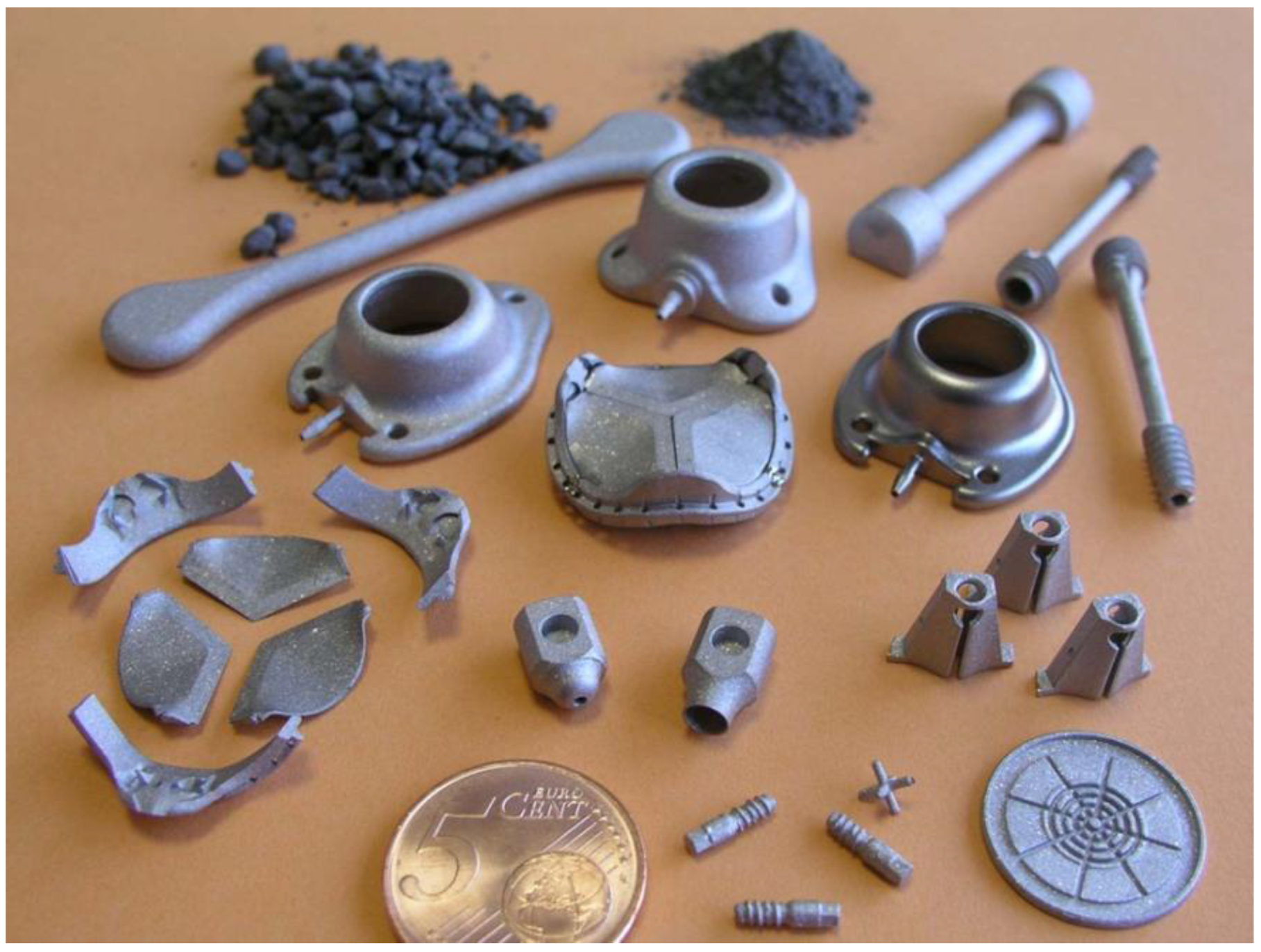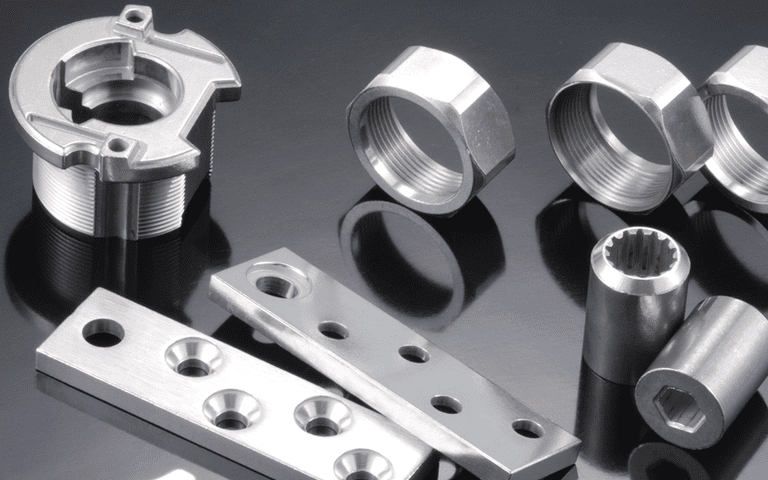Better Touch Better Business
Contact Sales at MDM Metal
1. Working conditions of plastic molds
Due to the development of the plastic and plastic molding industry, the quality requirements for plastic molds are becoming increasingly high. Therefore, the issue of plastic mold failure and its influencing factors has become an important research topic.
The main working parts of plastic molds are formed parts, such as convex molds and concave molds, which form the cavity of the plastic mold to form various surfaces of plastic parts and directly come into contact with the plastic, enduring pressure, temperature, friction, and corrosion.
2. Analysis of Failure Causes of Plastic Mold Materials
The general process of mold manufacturing includes mold design, material selection, heat treatment, mechanical processing, debugging, and installation. According to the survey, the materials used and heat treatment are the main factors affecting the service life of the mold among the factors that cause mold failure. From the perspective of comprehensive quality management, the factors that affect the service life of molds cannot be measured as the sum of polynomials, but should be the product of multiple factors. Therefore, the quality of mold materials and heat treatment is particularly important in the entire mold manufacturing process.

Analyzing the common phenomenon of mold failure, plastic molds can experience wear failure, localized deformation failure, and fracture failure during service. The important failure forms of plastic molds can be divided into wear failure, local plastic deformation failure, and fracture failure.
3. Performance requirements for plastic mold steel
With the rapid development of the manufacturing industry, plastic molds are indispensable tools in plastic molding and processing, accounting for an increasing proportion of the total mold production. With the development and continuous production of high-performance plastics, the types and uses of plastic products are increasing, and products are developing towards precision, large-scale, and complexity. With the development of high-speed molding production, the working conditions of molds are becoming increasingly complex.
1) Wear and corrosion on the surface of the mold cavity
Plastic melt flows under a certain pressure in the mold cavity, and solidified plastic parts detach from the mold, causing friction and wear on the formed surface of the mold. The fundamental cause of plastic mold wear and failure is the friction between the mold and materials. However, the specific form and process of wear are related to many factors, such as the pressure, temperature, material deformation speed, and lubrication condition of the mold during operation.
When the materials and heat treatment used in plastic molds are unreasonable, the surface hardness of the plastic mold cavity is low and the wear resistance is poor, which is manifested as: the size of the cavity surface is out of tolerance due to wear and deformation; The roughness value increases due to roughening, and the surface quality deteriorates.
Especially when solid materials are used to enter the mold cavity, it will exacerbate the wear of the cavity surface. In addition, during plastic processing, components such as chlorine and fluorine are heated to decompose into corrosive gases HC1 and HF, causing corrosion and wear on the surface of the plastic mold cavity, leading to failure.
If there is wear damage at the same time as wear, which damages the plating or other protective layers on the surface of the mold cavity, it will promote the corrosion process. The cross action of two types of damages accelerates corrosion and wear failure.
2) Plastic deformation failure
Pressure and heat on the surface of the plastic mold cavity can cause plastic deformation failure, especially when small molds are working on large-tonnage equipment, they are more prone to overload plastic deformation. The materials used in plastic molds have insufficient strength and toughness, resulting in low deformation resistance; Another reason for plastic deformation failure is mainly due to the thin hardening layer on the surface of the mold cavity, insufficient deformation resistance, or phase transformation softening occurring when the working temperature is higher than the tempering temperature, resulting in early failure of the mold.
3) Fracture
The main reason for the fracture is the structural stress and thermal stress caused by structure and temperature difference, or the structural stress generated in the mold due to insufficient tempering, which transforms the residual austenite into martensite at the service temperature, causing local volume expansion.
The working conditions of plastic molds are different from those of cold stamping molds. Generally, they must be operated at 150 ℃ -200 ℃, and in addition to being subjected to certain pressure, they also need to withstand the influence of temperature. The same mold can have multiple forms of failure, and even on the same mold, multiple damages may occur. From the failure forms of plastic molds, it can be seen that the reasonable selection of plastic mold materials and heat treatment are very important, as they directly affect the service life of the mold. Therefore, the steel used for plastic molds should meet the following requirements:
4) Heat resistance performance
With the emergence of high-speed forming machinery, the operating speed of plastic products has accelerated. Due to the molding temperature ranging from 200 to 350 ℃, if the plastic fluidity is poor and the molding speed is fast, it will cause the surface temperature of the mold to exceed 400 ℃ in a very short period of time. To ensure the accuracy and minimal deformation of the mold during use, the mold steel should have high heat resistance.
5) Adequate wear resistance
With the expansion of the use of plastic products, it is often necessary to add inorganic materials such as glass fibers to enhance plasticity. Due to the addition of additives, the fluidity of the plastic is greatly reduced, leading to mold wear. Therefore, it is required that the mold have good wear resistance.
6) Excellent cutting performance
Most plastic forming molds require certain cutting and fitter repair in addition to electric discharge machining. In order to prolong the service life of cutting tools, work hardening is small during cutting. In order to avoid mold deformation and affect accuracy, it is hoped that the residual stress during processing can be controlled to a minimum.
7) Good thermal stability
The shape of plastic injection mold parts is often complex and difficult to process after quenching, so materials with good thermal stability should be selected as much as possible.
8) Mirror processing performance
The surface of the cavity is smooth, and the forming surface requires polishing to a mirror surface, with a surface roughness lower than Ra0.4 μ m. To ensure the appearance of plastic pressed parts and facilitate demolding.
9) Heat treatment performance
In mold failure accidents, the accidents caused by heat treatment are generally 52.3%, making heat treatment play an important role in the entire mold manufacturing process. The quality of heat treatment technology has a significant impact on the quality of the mold. Generally, heat treatment requires small deformation, wide quenching temperature range, low sensitivity to overheating, and particularly high hardenability and hardenability.
10) Corrosion resistance
During the forming process, corrosive gas may be released and decomposed into corrosive gases, such as HC1, HF, etc., which corrode the mold. Sometimes, the mold is corroded and damaged at the air flow port, so it is required that the mold steel has good corrosion resistance.
4. New type of plastic mold steel
Generally, plastic molds are made of normalized 45 steel or 40Cr steel through quenching and tempering. Plastic molds with high hardness requirements are made of steel such as CrWMn or Crl2MoV. For plastic molds with high working temperatures, hot working mold steel with high toughness can be chosen. In order to meet the higher requirements for dimensional accuracy and surface quality of plastic cavities, a series of new mold steels have recently been developed.

1) Carburized plastic mold steel
Carburized plastic mold steel is mainly used for plastic molds with complex cavities formed by cold extrusion. This type of steel has a low carbon content and is often added with the element Cr. At the same time, an appropriate amount of Ni, Mo, and v are added to improve the hardenability and carburizing ability. In order to facilitate cold extrusion forming, this type of steel must have high plasticity and low deformation resistance in the annealed state, with an annealing hardness of ≤ 1 00HBS. After cold extrusion forming, carburization and quenching tempering treatment are carried out, and the surface hardness can reach 58-62HRC.
There are specialized steel grades for this type of steel abroad, such as Sweden's 8416 and the United States' P2 and P4. 12CrNi3A and 12Cr2Ni4A steel, as well as 20Cr2Ni4A steel, are commonly used in China, with good wear resistance, no collapse or surface peeling, and improved mold life. The elements cr, Ni, Mo, and V in steel increase the hardness and wear resistance of the carburized layer, as well as the strength and toughness of the core.
2) Pre hardened plastic mold steel
This type of steel has a carbon content of 0.3% -0.55%, and commonly used alloy elements include Cr, Ni, Mn, v, etc. In order to improve its cutting ability, elements such as s and ca were added. Several typical plastic mold steels Y55CrNiMn MoVS (SMI) were developed through research, introduction, and development. It is a Chinese developed S-series free cutting plastic mold steel with a pre hard delivery hardness of 35_ 40 HRC, with good machinability, can be directly used without heat treatment after processing. Adding Ni solid solution to strengthen and increase toughness, and adding Mn and S to form a easy cutting phase MnS; Adding Cr, Mo, and V to increase the hardenability of the steel, 8Cr2S steel is sufficient for easy cutting precision mold steel.
3) Time hardening plastic mold steel
A low cobalt, cobalt free and low nickel maraging steel has been developed. MASI is a typical maraging steel. After solid solution treatment at 8150C, the hardness is 28-32HRC. Mechanical processing is carried out, and then aged at 4800C to produce intermetallic compounds such as Ni3Mo and Ni3Ti, resulting in a hardness of 48-52 HRC. Steel has high strength and toughness, small size changes during aging, and good welding repair performance, but it is expensive and not very popular in China.
4) Corrosion resistant plastic mold steel
Plastic products made from polyvinyl chloride (PVC), ABS, and fire-resistant resin decompose during the forming process to produce corrosive gases that can corrode the mold. Therefore, plastic mold steel is required to have good corrosion resistance. Corrosion resistant plastic mould steels commonly used abroad include martensite stainless steel and precipitation hardening stainless steel. Foreign companies such as STSAX (4Crl3) and A SSAB-8407 from ASSAB in Sweden.
Copyright © 2015-2023 MDM Metal All Rights Reserved
 Send A Message
Send A MessageIf you are interested in our products and want to know more details,please leave a message here,we will reply you as soon as we can.